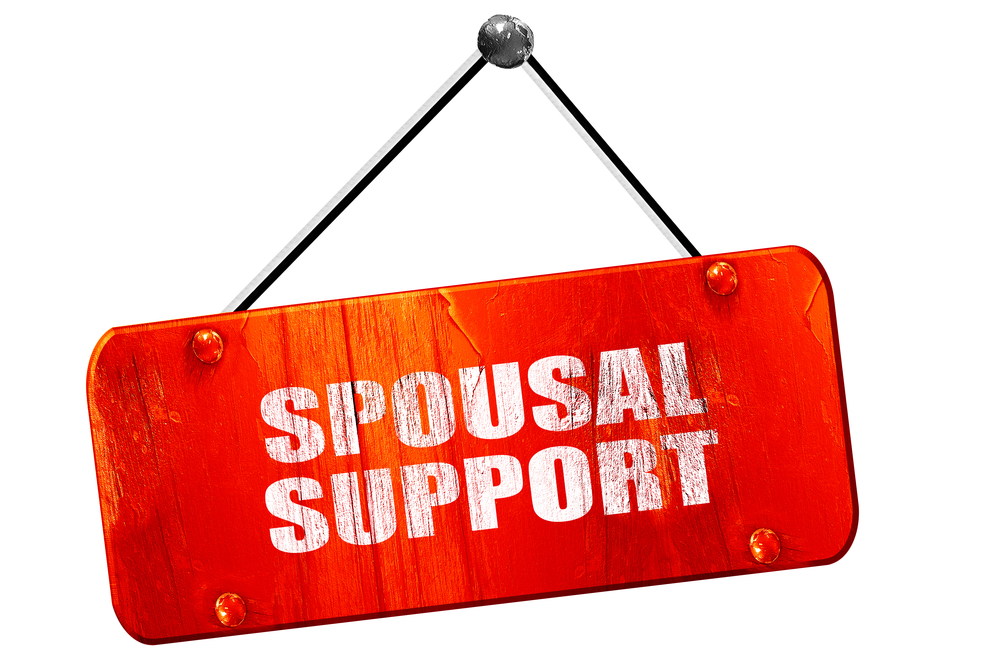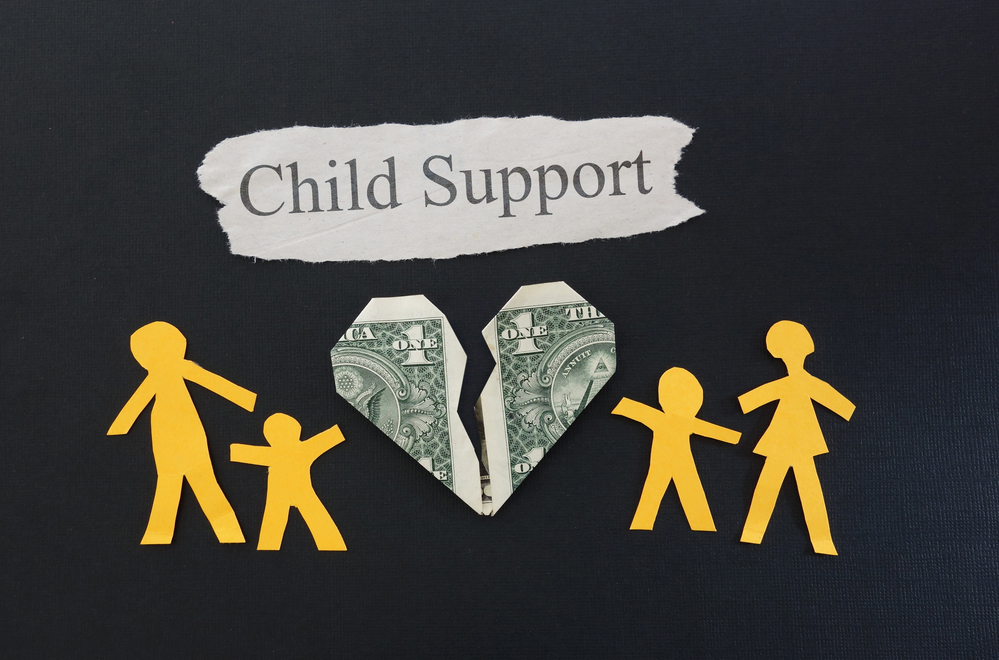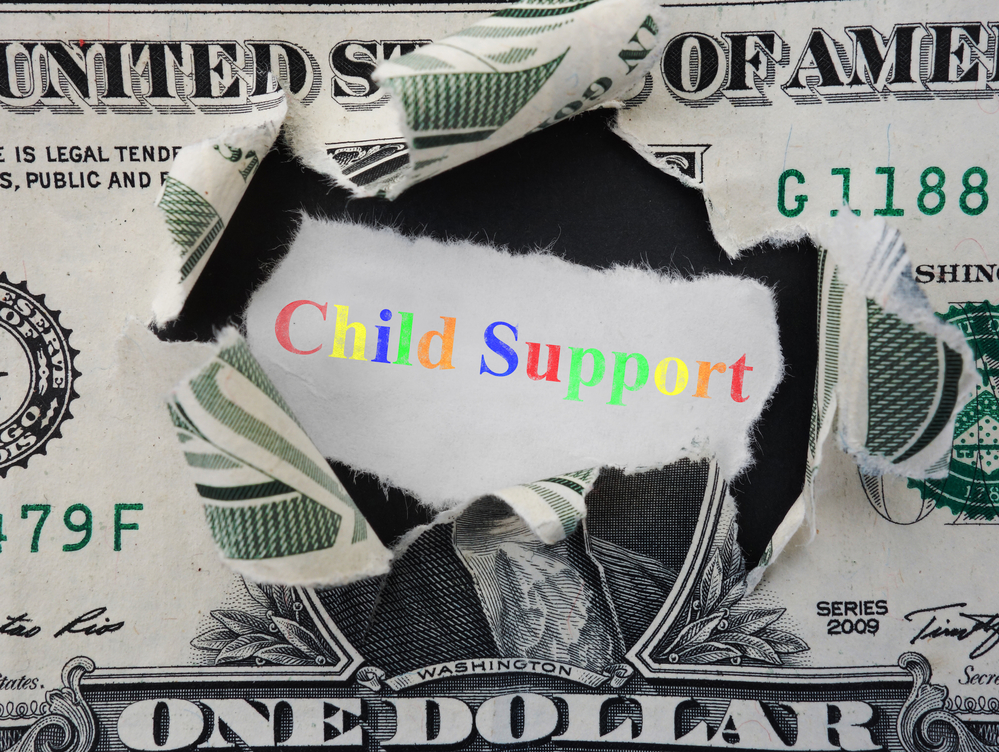** URGENT COVID-19 - WE'RE STILL OPEN *** Please click here for updates.
** COVID-19 - WE'RE STILL OPEN ***
Please click here for updates.
** URGENT COVID-19 - WE'RE STILL OPEN *** Please click here for updates.
** COVID-19 - WE'RE STILL OPEN ***
Please click here for updates.

You have financial and legal responsibilities to your child. It doesn't matter if you and the other parent are married.
This will remain true until the child is an adult, which is when he or she reaches age 18 in the United States.
Even if a parent does not want any parental rights he or she will still have responsibilities. A parent must make sure the child’s basic needs are being met.
Child support ensures the child has food, water, clothing, shelter, and so forth. If a married couple gets divorced, the goal is for the child's standard of living to stay the same. Or at least as close as possible to the same.
In Ohio, how child support is being calculated is changing based on new data. The Ohio Department of Job and Family Services is making updates to its child support laws for the first time since 1992.
These updates will go into effect in March of 2019. Learn more about these laws and how you’ll be affected.
Marriage is a state issue, as is child support. House Bill 366 was unanimously passed in Ohio to update the current child support laws in the state.
The main goal of the bill is to update the economic data to provide more accurate child support payments. Many factors that affect the cost of living and raising a child have changed, but how the child support calculations were made have not for the past 26 years.
To fully understand the new Ohio law updates, first, you need to grasp the legal implications of being a “parent.” If you are the biological or legally adoptive parent of a child, even if you do not want custody, you have responsibilities.
If you’re a single parent and the other biological parent is not wanting anything to do with the child, they are still financially responsible. Raising children is expensive, especially on a single-income.
Parents that do not want custody still can be court-ordered to provide financial support. During divorces, even if parents have joint custody, a parent may need to pay child support to make sure their child has the same standard of living after the divorce.
The money is meant for the child, not the parent. Spousal support is a different court-ordered payment.
In the event of a divorce, one parent may have to pay the other because he or she has a higher salary and the opportunity to make more money.
When a couple divorces it is rarely simple, not only on a personal level but on a legal level.
Divorce wasn’t even always legal in Ohio. Today if both people agree, it can be a relatively straightforward process, but it usually involves lawyers.
Divorce becomes more complicated when there are no prenups and the couple has children. Divorce is governed by the state rather than the federal government, so the laws vary from state to state.
Let’s say you’ve been married for a while, but it’s just not working out. You and your spouse decide you would like to get a divorce.
One of you can file for different fault grounds, such as extreme cruelty or drug/alcohol abuse. A no-fault divorce is a dissolution of marriage, in which you must live apart for one year, without “interruption or cohabitation” and both of you must agree on that incapability.

In the divorce settlement, you have to decide who gets what, and this includes the minor children, where it gets messier. Parents can either get sole or joint custody, which can be physical or legal.
Without a background in law, understanding updates to laws (or even the laws themselves) can be confusing and cause headaches. Knowing exactly what these updates are and when they will start affecting you is important.
Ohio’s child support law updates will change payments are calculated, which means your payments may go up or down in the next nine months.
When the new updates go into effect, the payments will not automatically increase for those already paying or receiving child support. You won't wake up one day with a larger check or have a larger check to write.
There will be a clearly defined process that parents must follow through the court or a child support enforcement agency. Any new child support orders will automatically follow the new updates.
If you file for a child support court order after the date that the update goes into effect, you won't have to make any changes.
When two people want to get married, they are entering a three-party legal contract with one another and the state they live in. To get married, you have to get a marriage license from the state.

Many people when they become married share finances and property. They merge bank accounts and purchase a house or car together.
As the saying goes “what’s mine is yours.” This idea works well for couples who stay together, but when couples divorce it starts to get messy.
When a couple becomes married, they have the choice of whether or not to sign a prenuptial agreement.

A prenuptial agreement is a legal contract that couples can create before they are married. This type of agreement usually includes a list of all of the assets and debts each individual has and specifies the individual’s rights to their property in the event of a divorce or death.
These agreements can be made after the marriage. In that case, it is called a postnuptial or marital agreement.
The principle behind divorce is simple in itself, people who were married and wish to no longer be married want to legally separate. Unfortunately for unhappy couples, the process is not simple.

If a couple does not have a prenup, each state has its laws for how the property is divided during a divorce (or spousal death). In Ohio, marriage does not automatically give one spouse ownership of the other’s property or assets that were acquired before the marriage nor does it make an individual responsible for their spouse’s premarital debts.
Assets the couple acquired together after marriage will be divided, typically equally unless there is evidence of financial misconduct by one of the individuals. This gets difficult if one partner makes more than the other or has an inheritance.
When one spouse makes more money than the other, the divorce settlement gains an additional financial component that can be tricky. In Ohio, this is called “spousal support,” though, in other locations, it may also be called “alimony.”
There is no specific formula to calculate spousal support. The court uses 14 different factors to calculate how much the spouse that makes less should be awarded and for how long.

The two biggest factors are how much each spouse made (the difference between the salaries) and how long they were married. The courts also analyze the education level of the spouses, earning capacity, health, and the standard of living the couple had.
A rule of thumb that is sometimes used is one year of spousal support for every three to five years of marriage. If the couple has children, one parent could end up paying alimony on top of child support.
What happens to the children under 18 during a divorce? Who do they live with?
In Ohio, is all determined during the legal process, called child custody. In Ohio, the court must determine “What is in the best interest of the child?”
The court focuses on what is best for the child and tries to ignore what the parents want, but things can get heated.
The courts can award parents legal or physical custody. Legal custody means the awarded parent can make decisions about the child’s upbringing, such as which school they can attend and what religion they can be brought up practicing.

Legal custody can be sole (only one parent has the legal rights) or joint (parents share the decision-making process). The parent with legal custody makes all of the decisions the child cannot make for themselves, like which elementary school to attend, who their primary doctor will be, do they go to Church, Temple, or a Mosque.
A parent that does not have legal custody does not get to be a part of the decision-making process, nor can they dispute the decisions made by the other children. If they do not agree with the choices the other parent made, there is nothing they can do legally.
Physical custody determines which parent the child lives with. If a parent has sole custody, the child will live with them primarily and that parent sets up “visitation” for the other parent. The other parent is still allowed to interact with their child, but the majority of the time they live with the parent that was awarded sole custody.
If they have visitation rights, they are legally allowed to see their children, usually on a set schedule determined by the court ex. two weekends a month. When parents share custody, it’s called joint custody.
The parents will switch off weeks and holidays, ex. The child will live with one parent for a week and then spend the next week living with the other parent.
In a sole custody case, the parent who is not living with or raising the child will have court-ordered monthly payments they must send to the other parent. This money is meant for raising the child.

Child support is for biological or adopted children under the age of 18 only. This amount is based on different economic factors such as how much the parent makes, how much the other parent makes, insurance, and how much time the non-custodial parent spends with the child.
Joint custody cases sometimes involve child support too, if one parent makes significantly more than the other or spends more time with one parent. Child support is supposed to protect children from the financial (economic) impact of the divorce.
All of their basic needs should be met and their standard of living should not change dramatically.
When an unmarried couple has a baby, in Ohio, the mother is automatically given sole legal and physical custody. The father of the baby has no rights until he proves that he is indeed the father and then he has to get a Court Order.

Proving paternity is not enough, it must go through the court system for the father to gain rights. The father can fight for custody, shared parenting, or parenting time.
Fathers are not guaranteed these rights based on paternity alone, it must be awarded by the Ohio legal system.
Even if the parents aren’t married, they still have a legal obligation to their children; the child support process is the same. A parent can deny paternity, but if the other parent files a court order, they will have to submit to a paternity test.
If the test is positive and the child is their biological child, they can be forced to pay child support to the other parent. The parent can refuse the testing, but then they can be found in contempt by the court.
Contempt in court means that an individual is not complying with a court order and the punishment can be jail time and/or a fine.
The last time the Ohio child custody laws were updated was in 1992. These guidelines dictated how child support was calculated up until today and it will continue for the next eight months.

The calculations were based on economic tables, parenting time, and health insurance coverage. The data used for these calculations was from the 1980s.
Many of these factors have changed in the past 26 years, which is why the House unanimously passed a bill to update these laws. The idea for this new overhaul is to make the calculations more accurate and easier to adjust in the future.
If you make less than $8,400 per year, you will only have to pay the minimum, which will be $80 per month (a $30 increase). Parents making less than $14,000 will be a little more protected.

Child support payments cannot be more than how much they make each month and the payments must leave them with a financial buffer (money left over to spend on other needs).
The tables for earning over $14,000 per year are still being decided, but the payments should be more affordable and fair for parents because of newer data. Parents shouldn’t have to pay more child support than they can afford with the new updates.
Each year in Ohio, 2 billion dollars in child support is collected each year and 100 million dollars is left uncollected. Many parents are unable to pay their child support payments, which can lead to legal trouble.
Some parents are unable to pay because the payments are too high, calculated from old data that is no longer accurate.
The economic tables used for child support calculations in Ohio will be updated based on more current data. Accurate and modern data will help the calculations be more “appropriate” for each income level.

The payments should increase or decrease based on how much you make. If you make a lot of money, your payments may go up, and if you do not make very much, your payments may go down.
Much has changed in the healthcare sphere since the 1980s. The parental responsibilities will be “aligned with the Affordable care act.”

The parent with sole custody is typically the parent who receives child support and pays for the child’s health care. Whichever parent pays for health insurance for their child can subtract that from their income when calculating child support.
If you make $30,000 a year, but pay $4,000 each year for your child’s health insurance, your “income” used to calculate how much child support you need will be $26,000.
If a parent has multiple child support orders, the deduction will be standardized. The goal is to make sure each child is receiving the same financial benefits.
Before this update, the first child you have to pay child support for receives the most. The other parents/children are given less each month.

If you have to pay for multiple children (from multiple parents), your monthly payments may go up as each child will now receive the same amount.
The past economic data only accounted for joint incomes of $150,000, but now will include combined incomes up to $300,000. The data can be updated by state workers instead of requiring Ohio lawmakers to approve updates, which will keep the data as accurate as possible.
There will also be new caps on the allowed credit for shared childcare expenses based on the Ohio averages. This means that child support can be used for daycare, but only up to a certain amount.

There will be a maximum put on childcare expenses used when calculating how much child support a parent has to pay.
The parenting time will be adjusted to account for the time the parent without sole physical custody spends with their child.
If you spend a lot of time with your child, this will now be calculated into the child support costs, and your payments may go down.
The ultimate goal is for child support payments to be calculated fairly so families with children can receive regular payments they can count on to use for childcare. The system is not perfect, they are still working out details.

The minimum monthly payment of 80 dollars for those making less than 8,400 dollars a year was increased by 30 dollars. But this is still significantly less than it costs to raise a child.
Baby formula can cost between $70 to $150 a month alone, a parent would still have other significant expenses. If the parent does not have someone who can watch their child, they are unable to work without paying for daycare (which can cost between 300 to 920 dollars depending on how far you are from the city).
Raising a child is expensive and in many situations, neither parent can afford the childcare costs.
How does this affect you today?
If you are currently paying or receiving child support in Ohio, nothing will change for the next nine months. Your payments will stay the same until you have them updated through a county child support agency or court.
Anyone who is filing for child support after the new updates is in effect will automatically have payments based on the new system.
The cost of raising a child has gone up since the 1980s and so has the cost of living. The new economic data will help recalculate how much child support a parent should have to pay.
Ohio lawmakers hope that these new updates will ensure parents are paying a fair amount of child support that correlates with how much money they make.
Currently, some parents have court orders for child support payments that are more than they can afford. This causes them to miss payments and face legal penalties like driver's license suspension.
Parents who make more than $150,000 combined annually will likely see increases, as the economic table has expanded.
Calculating child support is not an easy task, especially when the parent's salaries are below the poverty line.
These new updates to the Ohio child support laws aim to make it fairer for both parents.
How do you think these new updates affect you and your children?
Take the guesswork out of divorce fees. Click here to learn more.
When you subscribe to the blog, we will send you an e-mail when there are new updates on the site so you wouldn't miss them.
Jack’s Law Office
305 S Sandusky St
Delaware, OH 43015
(740) 369-7567